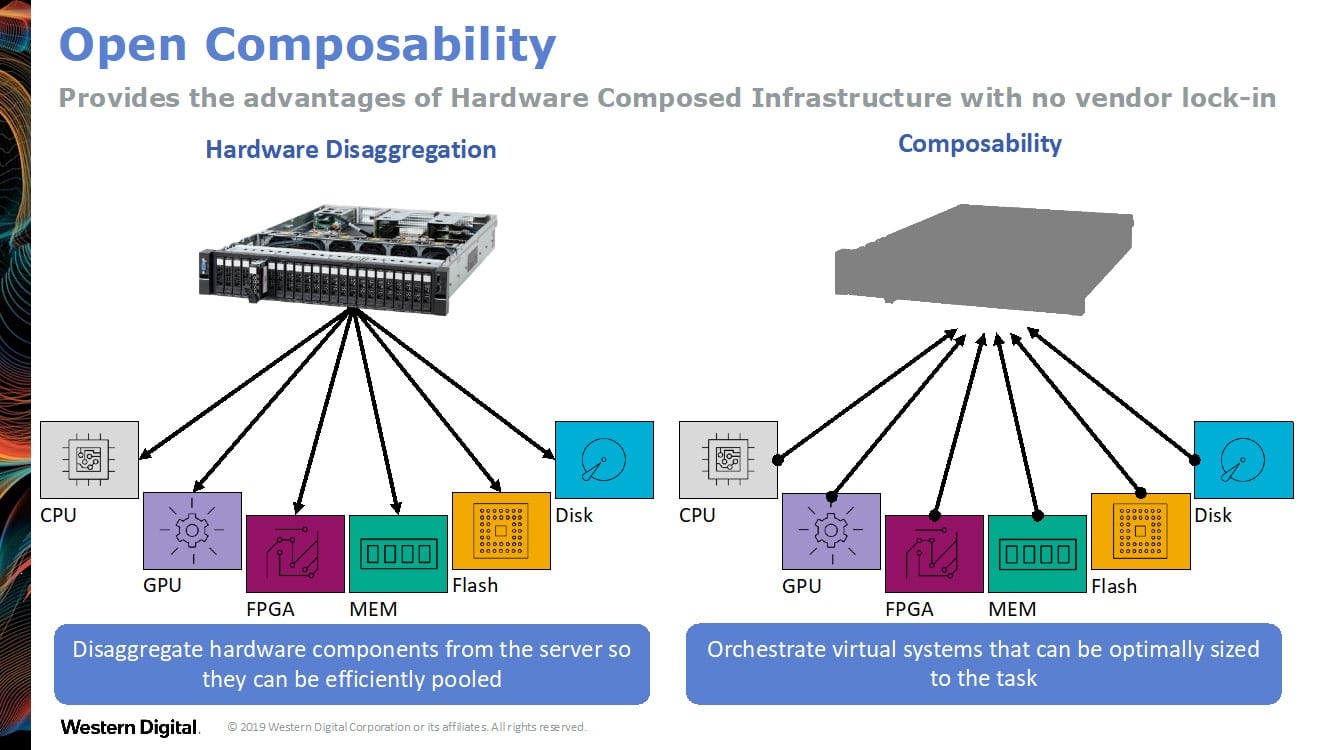From Flash to Fabric – Where the Data Center is Headed
By 2025, most data centers will likely have adopted NVMe™-based fabric (NVMe-oF™) for some parts of their architecture and accessing data from a shared storage system will be essentially as fast and as latency free as accessing data from direct attached storage (DAS). 2025 seems like a lifetime from now (two lifetimes in IT years) but the reality is it will be here before you know it. Early adopters are deploying NVMe-oF now and all IT professionals should start laying the groundwork now for a fabric future. Here’s how you get from flash to fabric.
Getting from Flash to Fabric
The first step on the progression to an end-to-end NVMe fabric-based infrastructure would be using NVMe SSD devices in individual servers. While this may benefit any applications running on that particular server, this NVMe device will be unavailable to other servers.
Deploying NVMe-Flash arrays, is the next step. This provides access to high performance flash storage to multiple servers accessed through conventional current networking SANs. One example of an array like this is the IntelliFlash™ N-Series NVMe All-Flash Array – featuring NVMe drives internally but connecting to the network via networking standards you already have in place; Fibre Channel, iSCSI, SMB, and NFS. As such you gain much of the benefit of NVMe using your standard networking infrastructure for your existing applications. These arrays are a first step towards an all-NVMe future.
The next step is to begin the implementation of NVMe-oF. Moving to NVMe-oF, depending on whether you go Fibre Channel or one of the Ethernet RDMA approaches, likely requires upgrades to higher performance switches and server adapters. Since most organizations rarely perform wholesale change outs in their network infrastructure, the changeover to an NVMe-oF ready network will take several more years for the majority data centers. The adoption will rise as more applications will be able to take advantage of the full performance of NVMe-oF (not all workloads can do that yet).
More Angles to Adoption
An area that will take advantage of NVMe-oF sooner is shared storage. Shared storage – dealing with the aggregate of application IO – is at risk of creating a performance bottleneck at the network level. While many approaches may be used, the first step may be extending NVMe beyond the direct attached storage system and into an NVMe-oF ready switch that can simultaneously communicate with legacy SCSI-based protocols and NVMe-oF.
A second approach would be to use NVMe-oF to support composable disaggregated infrastructures. Composable infrastructures enable organizations to build virtual storage systems from a variety of components on the storage network. The customer can define a virtual storage system for a specific use case, by specifying the amount of flash and disk required, and the performance needed from each. The composing, or orchestration, of the architecture obviously doesn’t mean the physical assembly of the parts; it is done virtually via the network. That network will need to be very high speed and very low in latency so that the virtual system is as fast as a physical system.
End-to-End NVME-oF
The final step is end-to-end NVMe-oF which means that the compute layer will have NVMe adapters installed and the switches within the infrastructure all support NVMe-oF. At that point the servers may also participate in the composable concept. Composable Infrastructure enables CPUs, FPGAs, GPUs, storage, and even memory to be disaggregated and then composed along with storage into virtual systems. Orchestration tools (click to download) are emerging today to provide this capability.
The future promises to be exciting as IT becomes the catalyst to true artificial intelligence enabling organizations to solve problems never thought possible. We can’t wait until 2025 to start developing these applications. However, the path to the future begins with today’s NVMe SSDs and flash arrays.
Building Composable Infrastructure
If you want to learn more about an NVMe-oF future, make sure to join me in an upcoming webinar about How to Build and Deploy an Open Composable Infrastructure and what are the factors for consideration in making this transition.
Forward-Looking Statements
Certain blog and other posts on this website may contain forward-looking statements, including statements relating to expectations for our product portfolio, the market for our products, product development efforts, and the capacities, capabilities and applications of our products. These forward-looking statements are subject to risks and uncertainties that could cause actual results to differ materially from those expressed in the forward-looking statements, including development challenges or delays, supply chain and logistics issues, changes in markets, demand, global economic conditions and other risks and uncertainties listed in Western Digital Corporation’s most recent quarterly and annual reports filed with the Securities and Exchange Commission, to which your attention is directed. Readers are cautioned not to place undue reliance on these forward-looking statements and we undertake no obligation to update these forward-looking statements to reflect subsequent events or circumstances.





